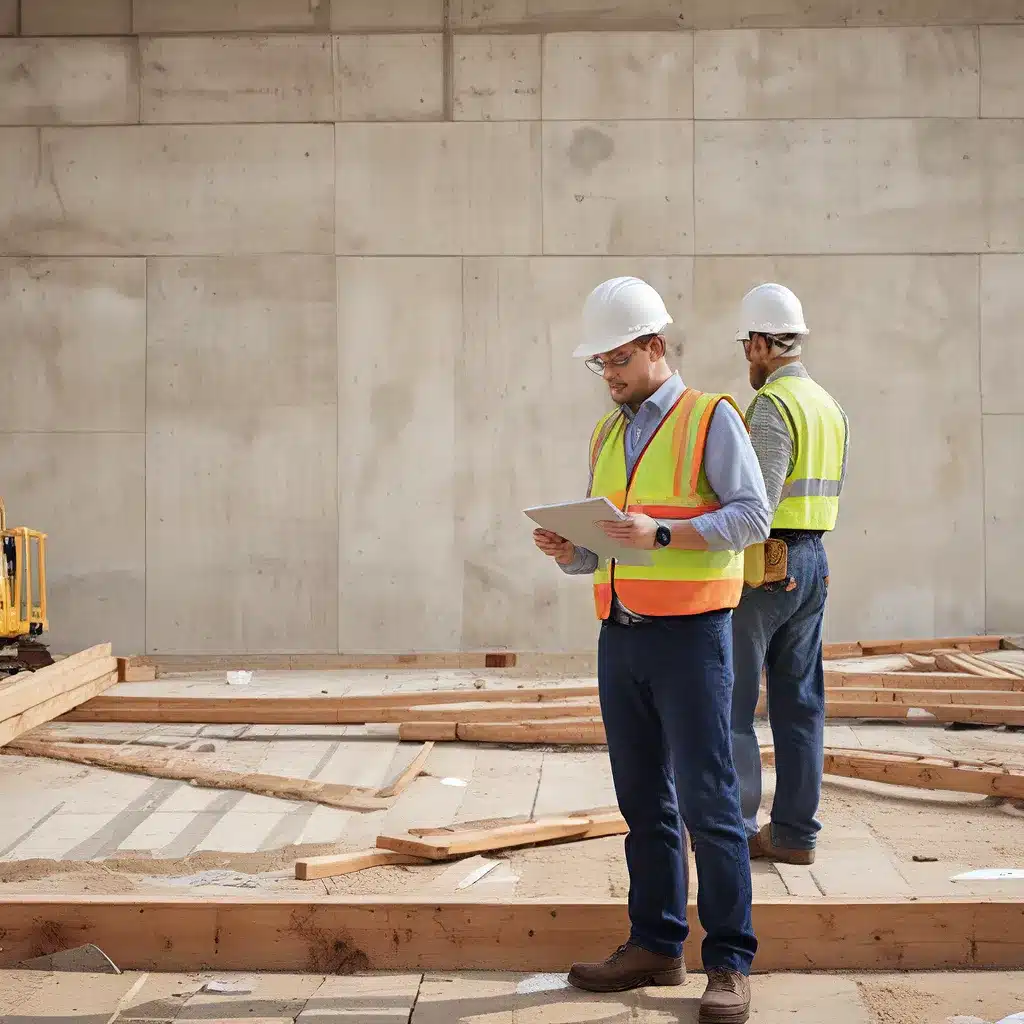
Ah, the construction industry – where the smell of freshly poured concrete mixes with the sound of thundering jackhammers and the occasional colorful language from our hardworking crews. As a general contractor, I’ve seen it all, from the glory of breaking ground on a new skyscraper to the heart-pounding stress of coordinating a million moving parts on a tight deadline. But hold onto your hardhats, my friends, because the construction world is undergoing a technological revolution that’s set to transform the way we do business.
The AI Invasion
It’s no secret that artificial intelligence (AI) has been steadily infiltrating the construction industry, and let me tell you, the changes are nothing short of mind-blowing. I recently had the privilege of sitting down with a few industry experts, including the brilliant minds of Todd Sutton, Tom Jennings, and Dr. Florent Poux, to explore the depths of AI’s integration and its future in heavy civil construction.
As they eloquently put it, civil construction is on the brink of a technological revolution, with AI and advanced tech paving the way for unprecedented efficiencies and capabilities. From predictive analytics and machine control systems to AI-assisted ground control marking tools, the construction landscape is being transformed before our very eyes.
One of the standout examples that really caught my attention was the integration of AI in modeling. As Dr. Poux explained, the transition from traditional mathematical algorithms to machine learning and deep learning approaches has been a game-changer, allowing us to bridge the 3D world with the physical construction processes. By injecting a certain level of knowledge into the data, we can now create valuable outputs that streamline our operations and enhance our productivity.
Overcoming Data Challenges
Of course, no technological revolution is without its obstacles, and the construction industry has had its fair share of data-related challenges. As Todd Sutton pointed out, there’s a common misconception that AI implementation is hindered by data disparity. But with today’s advancements, such as Retrieval-Augmented Generation (RAG), we can now effectively ingest data from various repositories, including enterprise knowledge bases, and piece them together to create a cohesive picture.
It’s a bit like putting together a jigsaw puzzle, but with AI as our trusty assistant. And let me tell you, once you get the hang of it, the possibilities are endless. As Tom Jennings eloquently stated, these AI-powered tools are a “huge time-saver,” showcasing the industry’s capacity to enhance productivity and streamline operations.
Embracing the Stumbles
Now, I know what you’re thinking – with all this cutting-edge tech, it must be a seamless transition, right? Well, not exactly. As the experts emphasized, there’s a cautious yet progressive approach to integrating AI technologies. Dr. Poux advises us to “start with classical approaches and use deep learning only if these approaches fail.” In other words, we need to be willing to embrace the stumbles and learn from them.
As Todd Sutton so eloquently put it, “You will fail at first, but then eventually you’ll have a solid understanding and implementation.” This sentiment is echoed by both Tom Jennings and Dr. Poux, who stress the importance of security and rigorous testing in the development of AI applications.
Building Bridges with Field Crews
Now, let’s talk about the human element of this technological revolution. As a general contractor, I’ve learned that one of the biggest challenges with implementing new tech in the field is overcoming the reluctance to embrace change. I mean, let’s be honest, field crews are already juggling a million and one tasks, and the last thing they want is some tech-savvy person showing up with a bunch of new demands.
That’s where the role of the Construction Technology Specialist comes into play, and let me tell you, they are worth their weight in gold. As Jonah Walton, a Construction Technology Specialist at Polk Mechanical, shared with me, these individuals are the bridge-builders between the traditional construction domain and the ever-evolving realm of technology.
Jonah’s approach to engaging with the field crews is a true masterclass in empathy and respect. He understands that “there is a very real human element to tech training and adoption that can not be ignored.” By making personal connections, building trust, and ensuring that the field crews feel heard and valued, Jonah has become an indispensable asset in driving technology adoption and innovation.
Securing Buy-in from Leadership
But the technology revolution in construction isn’t just about the field crews – it’s also a matter of securing buy-in from the top brass. As Jonah shared, the role of the Construction Technology Specialist has evolved from limited interaction with executive leadership to a more collaborative and open dialogue.
These specialists are now seen as the middle person for innovation, liaising between the executive team, field crews, operations, project management, and IT. Their insights and technical expertise have become invaluable in helping construction leaders navigate the ever-changing landscape of construction technology.
Embracing the Future
As we venture deeper into this technological frontier, it’s clear that the future of construction is inextricably linked to the advancements in AI and beyond. And let me tell you, I for one am excited to be a part of this journey.
Sure, there will be challenges along the way – from data integration hurdles to the inevitable stumbles and failures. But as the experts have shown, it’s all about embracing the learning process, fostering strong relationships with the field crews, and securing the support of our leadership teams.
So, my fellow general contractors, let’s roll up our sleeves and dive headfirst into this technological revolution. Who knows, maybe one day we’ll be building skyscrapers using AI-powered construction robots, or coordinating our projects with the help of predictive analytics that can foresee every possible hiccup. The possibilities are endless, and the future is ours to shape.
Now, if you’ll excuse me, I’ve got a meeting with my Construction Technology Specialist to discuss the latest advancements in general contracting and construction services. Onward and upward, my friends!
Related posts:
No related posts.




